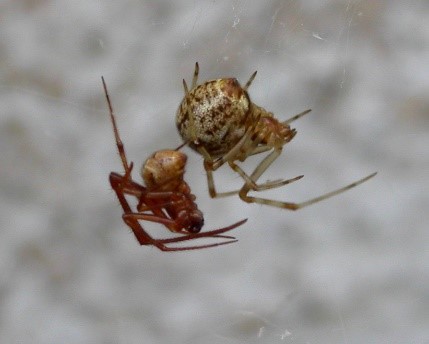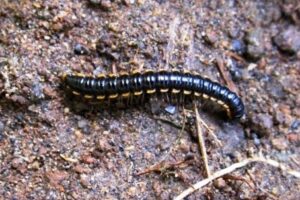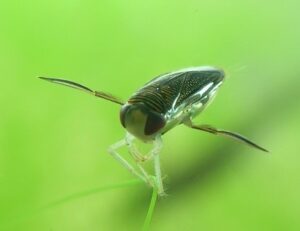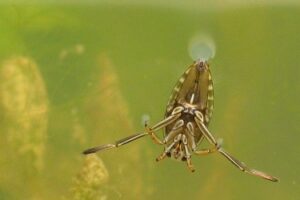Common House Spider
General Description
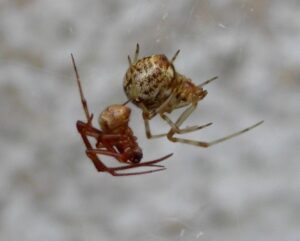
A male and female (the female is the larger of the two). Credit: Calibas |

Credit: Patrick Moran |
- Common house spiders are tan to nearly black, with patterns of shades on their body.
- Females are 5 and 6 mm long, and males are 3.8 and 4.7 mm long.
- Males have a less bulbous abdomen than females.
- The size and coloration allow the spiders to blend into the background and escape notice.
Life Cycle and Common Characteristics
| · This species lives for more than a year after reaching maturity.
· Females suspend their egg sacs in their webs; the spherical egg sacs have a tan papery outer layer. · Each egg sac contains 150–200 eggs, and a single female produces 15–20 egg sacs in its lifetime. · Spiderlings remain in the mother’s web for several days after emerging from the egg sac. · The spiderlings molt and develop before they become adults. |
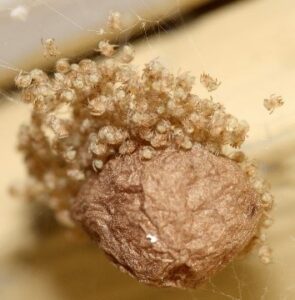
Recently hatched egg sac. The spiderlings atop the hatched egg sac are likely 3 days old and roughly the size of a pepper grain each. Credit: Richhoyer99 |
- Spiderlings molt 6 times for males and 7 times in females.
- Spiders overwinter (as either adults or eggs) inside houses, sheds garages, hollow logs, or underneath rocks.
- Both males and females share the same web for long periods.
- They are found hiding in the corners of doorways, in closets, in clothing and shoes, underneath furniture, and in basements attics.
- They have poor vision and cannot detect any movement more than 7 to 10 cm away
Damages and Economic & Medical Implications
· The house spider is the spider most often encountered in human-dwelling places. They are not aggressive and let a human hand approach their webs. It is considered to be a nuisance pest, probably more because of its webs than the spider itself.
- They bite humansonly in self-defense when grabbed and squeezed.
- House spiders have neurotoxic Their bites are less severe than that of other theridiids and are “not known to be dangerous to humans”.
- They are natural predators of many other pests, including houseflies and mosquitoes.
- jackets.

